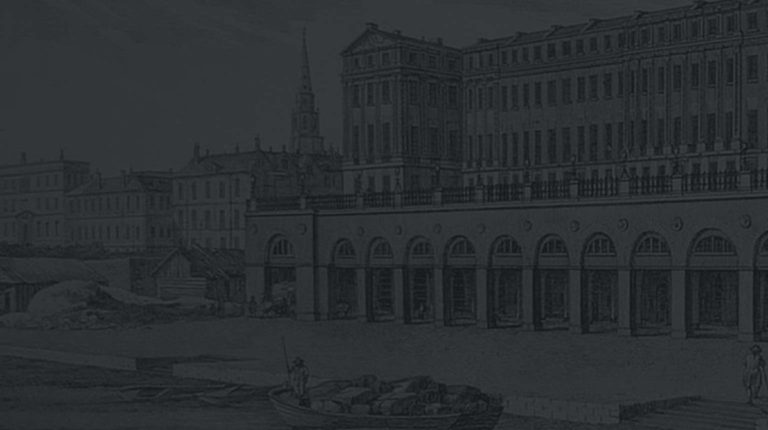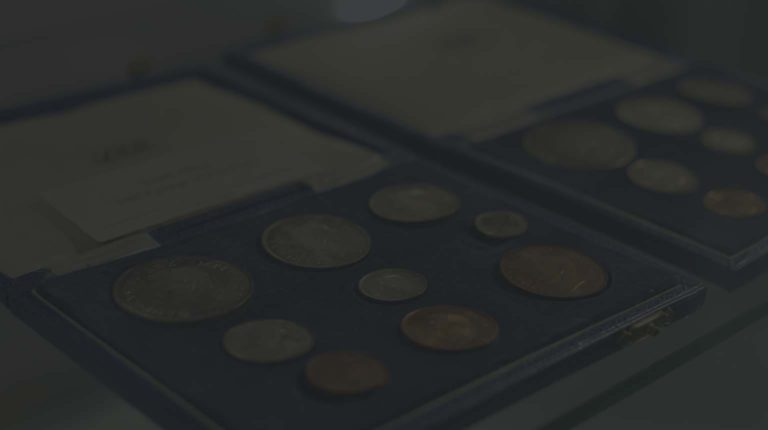Here at A H Baldwin & Sons Ltd, tens of thousands of items pass through our salesroom every year and each and every one of them possesses its own unique and fascinating history. Unearthing that history, delving through the sheen and lustre to discover the stories and narratives beyond, is a relished task for our team of specialists who catalogue, grade and value items from all over the world and all periods of human history.
Discovering the rich, varied, and often poignant backgrounds of a particular item is more often than not the most rewarding and satisfying element to our job.
We can, for instance, in almost all cases, tell where a certain coin came from. Most items themselves will willingly surrender their own clues as to their heritage. Others may take a little more persuading to give up their secrets. Even in the cases where considerable research is required, we can usually tell, for example, where a coin was minted; we can tell when it was produced; and very often by whom and for what purpose.
It is extremely rare, however, that we able to say, with some considerable degree of accuracy, that a particular 370-year old coin was born on the dinner tables and cutlery drawers of a city in the North of England.

The coin in question is a silver Three Shillings from 1645, and one of a selection of obsidional, or ‘siege’ coins going under the hammer in our auction on September 24 at our London Auction Room.
The period was, as the historians amongst us will know, the English Civil War of 1642-1649, when many cities across England came under siege from Cromwell’s forces.
The vagaries of the war – how it came to be and the political and regnal manoeuvring that led to ‘letting loose the dogs of war’ – have been much documented. For the numismatist, however, one of the most fascinating aspects of the period was the emergence of the obsidional coin.
When a city came under siege, the flow of money (just as the flow of food, water and other amenities) was severely restricted, and provisions had to be made in order to pay the garrisons trapped alongside the residents inside the city walls. To this end, new coins were created, produced, and distributed amongst the soldiers.
In October 1644, General Alexander Leslie, the 1st Earl of Leven, after the successful storming of Newcastle, travelled west to lay siege to Carlisle. The city was blockaded until surrendering on 25 June 1645, and during that relatively short period no coinage was permitted to enter or leave the city. A solution had to be found so that the forces on the inside could receive their wages, and that solution was to create entirely new coins that could be used as currency.
A shortage of physical money in the pocket is something that, in modern days, is difficult to contemplate. With so many transactions conducted electronically we have developed a tendency to take it for granted, and any shortage of coinage is generally due to poor fiscal management rather than any shortage of supply! In the case of Carlisle in 1644, it was the lack of raw materials that presented the problem. Coins are made of metal, and Carlisle, like so many cities, is distinctly short on mines. The solution was to request the donation of plate, from the townsfolk themselves, that could be melted down and turned into coinage.
From this donated plate, coins of two denominations were minted – the Three Shilling piece and the Shilling piece, the former being the rarer (and therefore producing the lower survival rate). Examples of both feature in our auction.
We know that in Carlisle exactly 1,162 pounds of plate was donated, and we also know that 21 of those pounds was lost in ‘meltynge and working’, giving us a fair idea of just how many of these coins were produced. In fact, we know a great deal about the siege of Carlisle and what went on behind those barricaded walls, and for this we are indebted to a young man named Leslie Tullie. His ‘Narrative of the Siege of Carlisle’ still exists, and contains much of great interest to the historian – not least his meticulous recording of all the plate donated. For example:
Oz.
Will Atkinson: A trencher salt & three spoones 012-1/2-0
Julian Aglionby: one boule 008-1/2-0
Edmond Kidd: two boules 015-3/4-0
Mary Carlile: one bowle and 8 spoones 015-3/4-0
Amongst the many wonderful things that the complete list of over one hundred and eighty-three pieces that were donated (along with numerous pieces of broken plate) tells us is that whilst Mr Tullie himself is not listed, his mother is: she donated five spoones. Given the young Mr Tullie’s enthusiasm for events (his painstaking records given as evidence), one can only imagine the conversations that took place in that household regarding the future of those spoones!
The story in Carlisle was played out in many other townships across England as the Civil War continued. Obsidional coinage was also produced in Newark and Pontefract. As well as the Carlisle coins, our auction also features some intriguing besieged coinage from these cities – from Newark the Silver Halfcrown (1646); the Silver Shilling (1645); the Silver Ninepence (1646) and the Silver Sixpence (1646); and from Pontefract we have a Silver Shilling from 1648, along with a fascinating example of the same that was produced after the execution of Charles I.
Coins such as these appear on the market extremely rarely – primarily due to their scarcity, but also because their extreme high levels of collectability mean that their owners are infrequently inclined to part with them. These exquisite coins going under the hammer at our auction are a rare and wonderful chance to own a part of English history that is as intriguing as it is unique, leaving us to speculate on the contents of our own cutlery drawers, and ponder the reaction of the good folk of Carlisle in 1644 were they around to be told that their same would one day sell at auction for an estimated £30,000…..


